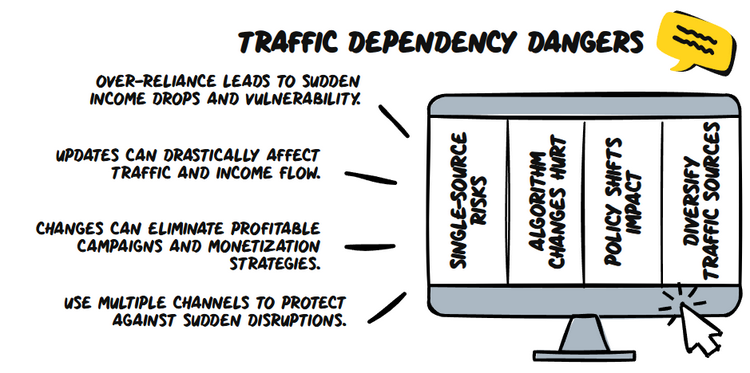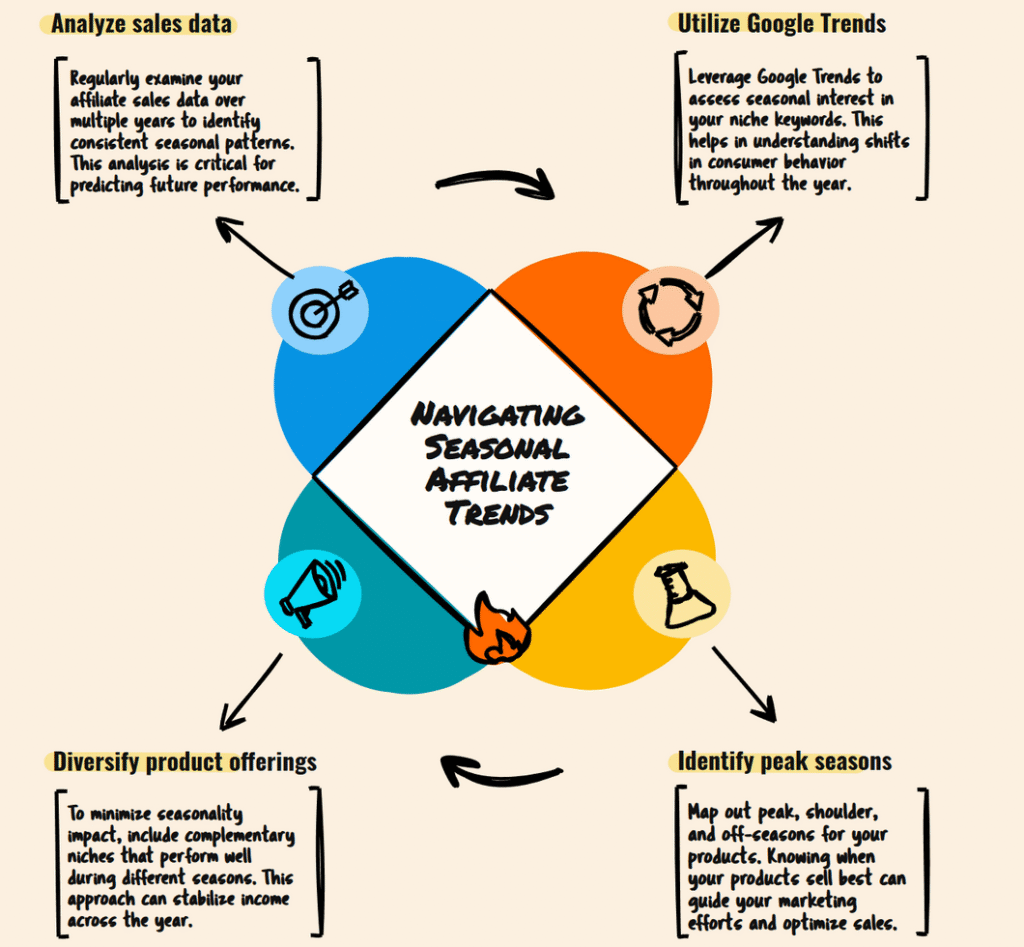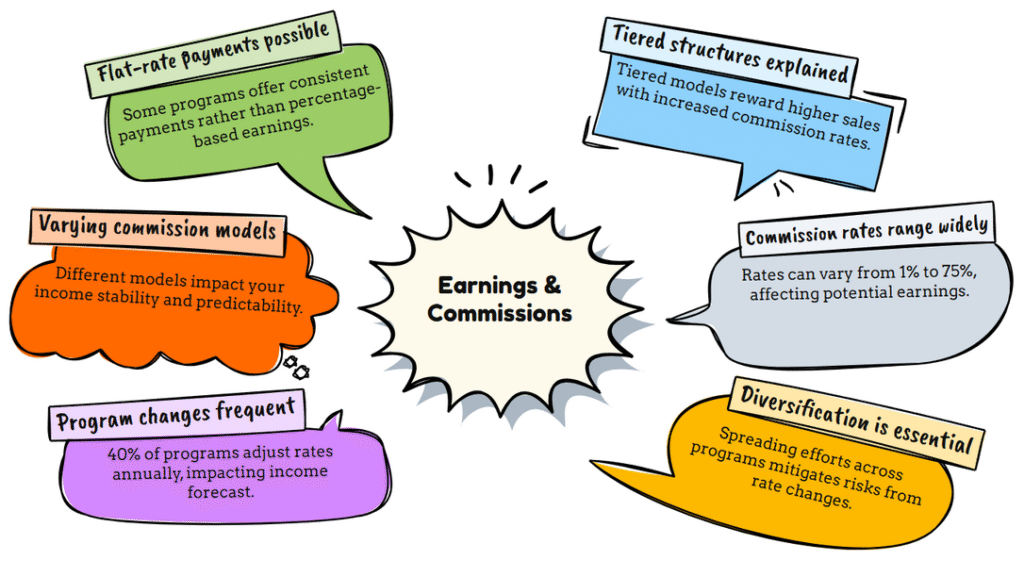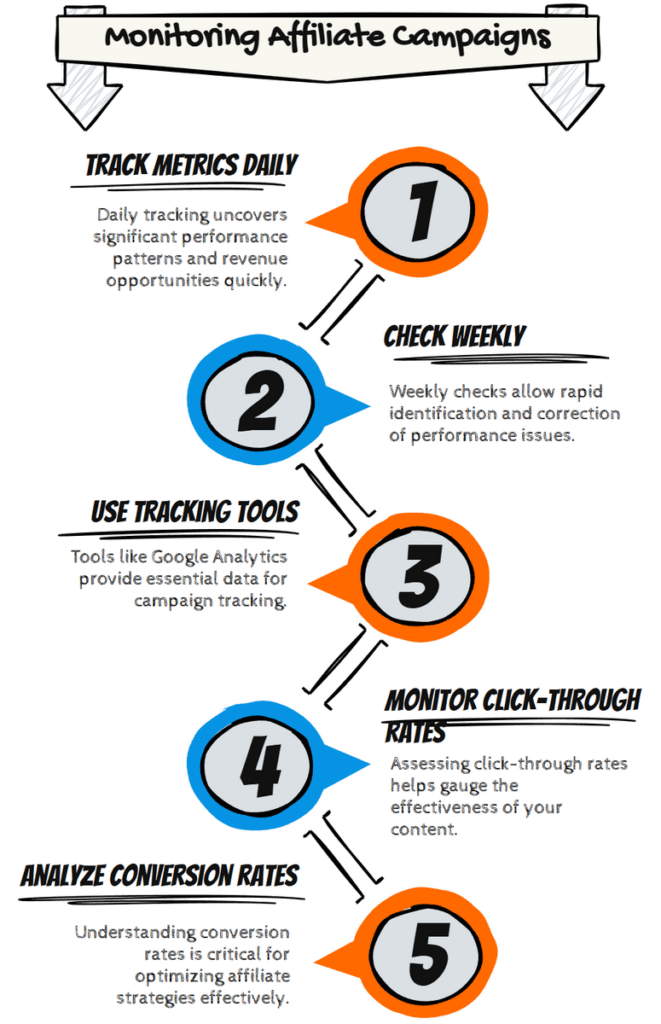
Many affiliate marketers experience the frustration of unpredictable earnings, watching their income swing wildly from month to month. While affiliate marketing can be highly profitable, inconsistent revenue patterns often stem from common mistakes in your approach. Understanding these pitfalls is vital because they directly impact your bottom line. Your success in this field depends on recognizing that stable income isn’t about luck—it’s about strategy. Whether you’re new to affiliate marketing or looking to stabilize your existing revenue, identifying the root causes of income fluctuation is your first step toward building a reliable, sustainable affiliate business.
Unpacking the Reasons Behind Your Income Fluctuations
To build a stable income in affiliate marketing, you need to dive deep into the factors that cause those income swings. Maybe your audience isn’t engaging enough. Perhaps your content isn’t driving conversions. These issues are common, but they are also fixable.
That’s where our Affiliate Conversion Rate Checklist comes in. This tool will help you pinpoint what’s holding back your earnings. It’s designed to bolster your strategies and enhance your approach. With clear steps and actionable insights, you’ll find out how to increase your conversion rates. No more guesswork. Just results.
Let’s explore the critical reasons behind inconsistent earnings and how you can address them effectively. Each point will guide you toward a more robust and reliable affiliate marketing strategy. Understanding these factors is your key to unlocking the income stability you’ve been striving for.
Key Takeaways:
- Relying on a single traffic source makes affiliate income vulnerable to fluctuations – diversify across SEO, email marketing, and social media to stabilize earnings
- Seasonal trends and niche-specific patterns can cause dramatic income swings – plan ahead for known peak and low periods in your market
- Regular monitoring of affiliate dashboard metrics and conversion rates helps identify problems early, allowing for quick adjustments to maintain income stability
- Optimizing sales funnels through consistent testing of headlines, CTAs, and offer placements leads to more predictable conversion rates and revenue
- Weekly campaign tracking (versus monthly) enables real-time problem-solving and faster response to negative income trends
The Traffic Dependency Trap

Relying too heavily on a single traffic source creates a dangerous vulnerability in your affiliate business. A single algorithm update, policy change, or platform shift can slash your income overnight. Many affiliate marketers learn this lesson the hard way when their primary traffic channel suddenly dries up, leaving them scrambling to rebuild their revenue streams from scratch.
Risks of Single-Source Traffic
Putting all your eggs in one traffic basket exposes your business to potentially catastrophic disruptions. Pinterest algorithm changes have wiped out entire affiliate businesses. Facebook ad costs can suddenly spike, making previously profitable campaigns unsustainable. Google updates can tank your SEO rankings. Your affiliate income becomes hostage to factors completely outside your control.
Strategies for Diversification
Building a multi-channel traffic portfolio shields your affiliate income from sudden disruptions. Mix organic search traffic with social media presence, email list building, and paid advertising. Each channel should contribute at least 15-25% of your total traffic, ensuring no single source can tank your entire business.
Start by identifying 3-4 traffic channels that align with your niche and audience. Create a content distribution plan that feeds each channel consistently. Track the ROI of each source separately. Gradually scale up successful channels while testing new ones. Your goal is to build a traffic ecosystem where growth in one area can compensate for temporary dips in another. This approach takes more work upfront but delivers far more stable long-term results.
The Impact of Seasonal Trends

Seasonal fluctuations can cause dramatic swings in your affiliate earnings throughout the year. Your profitable winter products might see a 70-80% drop in sales during summer months, while beach gear affiliates often experience the opposite pattern. Understanding these cyclical changes helps you predict cash flow and adapt your strategy accordingly, rather than being caught off guard by predictable dips.
Identifying Seasonal Patterns in Your Niche
Analyze your affiliate sales data across multiple years to spot recurring patterns. Use tools like Google Trends to track seasonal interest in your niche keywords. Map out peak seasons, shoulder seasons, and off-seasons for your primary product categories. For example, fitness products typically spike in January, while tech products see their highest sales during Black Friday and Cyber Monday.
Mitigation Tactics for Seasonal Variability
Combat seasonal downturns by diversifying into complementary niches with opposite seasonal patterns. If you promote skiing equipment, add summer sports gear to your portfolio. Build an email list during peak seasons to maintain engagement during slower periods. Create content that generates year-round traffic to stabilize your baseline income.
Advanced mitigation strategies include developing seasonal content calendars months in advance, stockpiling content for high-traffic periods, and adjusting your promotional calendar to maximize earnings during peak seasons. Consider geographic targeting to tap into different seasonal patterns across hemispheres – when it’s winter in North America, it’s summer in Australia, creating year-round opportunities for seasonal products.
Conversion Rate Dynamics

Conversion rates rarely remain static in affiliate marketing. Your rates fluctuate based on market conditions, seasonal factors, and audience behavior patterns. A 1% shift in conversion rate can mean thousands in lost or gained revenue. Understanding these dynamics helps you predict income variations and implement targeted improvements to stabilize your earnings.
How Metrics Translate to Income
Your conversion metrics directly impact your bottom line through a clear mathematical relationship. If you’re driving 10,000 monthly visitors with a 2% conversion rate and $50 commission per sale, that’s $10,000 in monthly income. When that conversion rate drops to 1.5%, you lose $2,500 in potential earnings. These fluctuations explain why your income varies even when traffic stays constant.
Key Areas for Optimization
Three core areas determine your conversion success: landing page effectiveness, offer relevance, and audience targeting. Your landing pages need to maintain at least a 2% conversion rate to ensure profitable campaigns. The alignment between your traffic source and affiliate offers creates the foundation for consistent conversions.
Fine-tuning these elements requires constant attention to analytics. Track bounce rates to spot landing page issues. Monitor affiliate link click-through rates to gauge offer appeal. Segment your traffic sources to identify which channels convert best. A/B testing different page layouts, call-to-action placements, and promotional approaches can lift conversion rates by 25-50%. Regular optimization in these areas helps stabilize your conversion rates and, consequently, your income.
Earnings and Commission Structures

Different affiliate programs offer varying commission models that directly impact your income stability. Commission rates can range from 1% to 75%, with some programs offering flat-rate payments while others use tiered structures. Understanding these payment models helps you select programs that align with your revenue goals and provide more predictable income streams.
Navigating Program Changes and Challenges
Affiliate networks frequently adjust their commission structures and terms, which can dramatically affect your earnings. Recent industry data shows that 40% of programs modify their commission rates annually. These changes often come with little warning, making it necessary to diversify across multiple programs and maintain backup offers for your top-performing content.
Proactive Strategies for Affiliate Terms
Take control of your commission stability by thoroughly reviewing program terms before investing significant resources. Focus on programs with at least 30-day cookie windows and clear policies regarding commission changes. Establish direct relationships with affiliate managers to stay informed about upcoming modifications and negotiate better terms.
Building strong relationships with affiliate managers opens doors to exclusive opportunities. Request access to beta programs, higher commission tiers, and extended cookie durations. Document your promotional success and leverage it during negotiations. Consider creating case studies of your results to demonstrate value to potential partners. Top performers often secure commission rates 15-25% higher than standard program offerings through proactive relationship management.
The Importance of Regular Monitoring

Regular monitoring of your affiliate campaigns reveals hidden performance patterns and revenue opportunities you might otherwise miss. Data shows that affiliates who track metrics daily or weekly earn 32% more than those who check monthly. Your success hinges on spotting declining conversion rates, identifying top-performing content, and catching technical issues before they impact your bottom line.
Weekly Tracking vs. Monthly Reviews
Weekly tracking gives you the agility to respond to market changes fast. Rather than discovering problems at month-end, you can identify and fix issues within days, potentially saving thousands in lost commissions. Your weekly monitoring routine should include checking conversion rates, click-through rates, and earnings per click across all your affiliate platforms and traffic sources.
Tools to Monitor and Analyze Performance
Your monitoring toolkit should include both free and premium solutions to track every aspect of your affiliate business. Google Analytics combined with specialized affiliate tracking software provides the most comprehensive performance insights. Popular options include ClickMeter, Voluum, and LinkTrackr for detailed click data and conversion tracking.
These tools enable you to monitor click fraud, track user behavior, and analyze which content drives the highest converting traffic. Advanced features like split testing and multi-touch attribution help optimize your campaigns in real-time. Set up automated alerts for significant metrics drops, commission rate changes, and unusual traffic patterns to stay ahead of potential income fluctuations.
Final Thoughts: Building a Sustainable Income Stream
Building sustainable affiliate income isn’t a quick fix—it’s an ongoing process of refinement and growth. The key to long-term success lies in treating your affiliate business like a diverse investment portfolio. Mix high-performing evergreen products with seasonal offerings, combine multiple traffic sources, and continuously optimize your conversion funnels. Your future self will thank you for putting in the work today to create a robust, resilient income stream that can weather market changes and grow steadily over time. By implementing the strategies outlined above, you’re not just fixing income inconsistency—you’re building a foundation for lasting financial success in affiliate marketing.
FAQ
Q: Why does my affiliate marketing income fluctuate so much from month to month?
A: Income fluctuations often occur due to over-reliance on single traffic sources, seasonal trends in your niche, and changes in affiliate program policies. To stabilize your earnings, diversify your traffic sources across SEO, email marketing, and social media platforms. Additionally, track your metrics weekly to identify and address performance issues quickly.
Q: How can I protect my affiliate income from sudden traffic drops?
A: The best protection is implementing multiple marketing channels. Build an email list, create evergreen SEO content, maintain active social media presence, and consider paid advertising. This multi-channel approach ensures that if one traffic source declines, others can compensate, maintaining steady income levels.
Q: What role do seasonal trends play in affiliate marketing income inconsistency?
A: Seasonal trends can significantly impact affiliate earnings, especially in niches like holiday gifts, fitness, or travel. To minimize seasonal impacts, diversify into multiple niches with different peak seasons, create year-round relevant content, and plan promotional strategies that align with known high and low periods.
Q: How often should I review my affiliate marketing performance metrics?
A: Monitor your key performance indicators (KPIs) weekly rather than monthly. Track conversion rates, click-through rates, and revenue per click. This frequent monitoring allows you to spot negative trends early and make necessary adjustments before they significantly impact your monthly income.
Q: What improvements to my sales funnel can help stabilize affiliate income?
A: Focus on optimizing your conversion elements by testing different headlines, call-to-action buttons, and offer placements. Improve your content quality, target more specific audiences, and enhance your landing pages. Regular A/B testing of these elements can lead to higher conversion rates and more consistent income streams.
